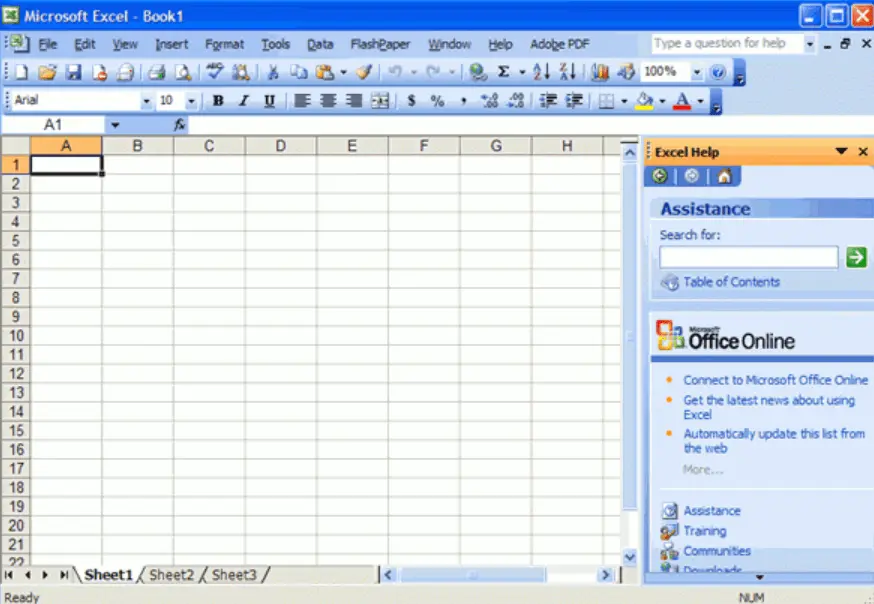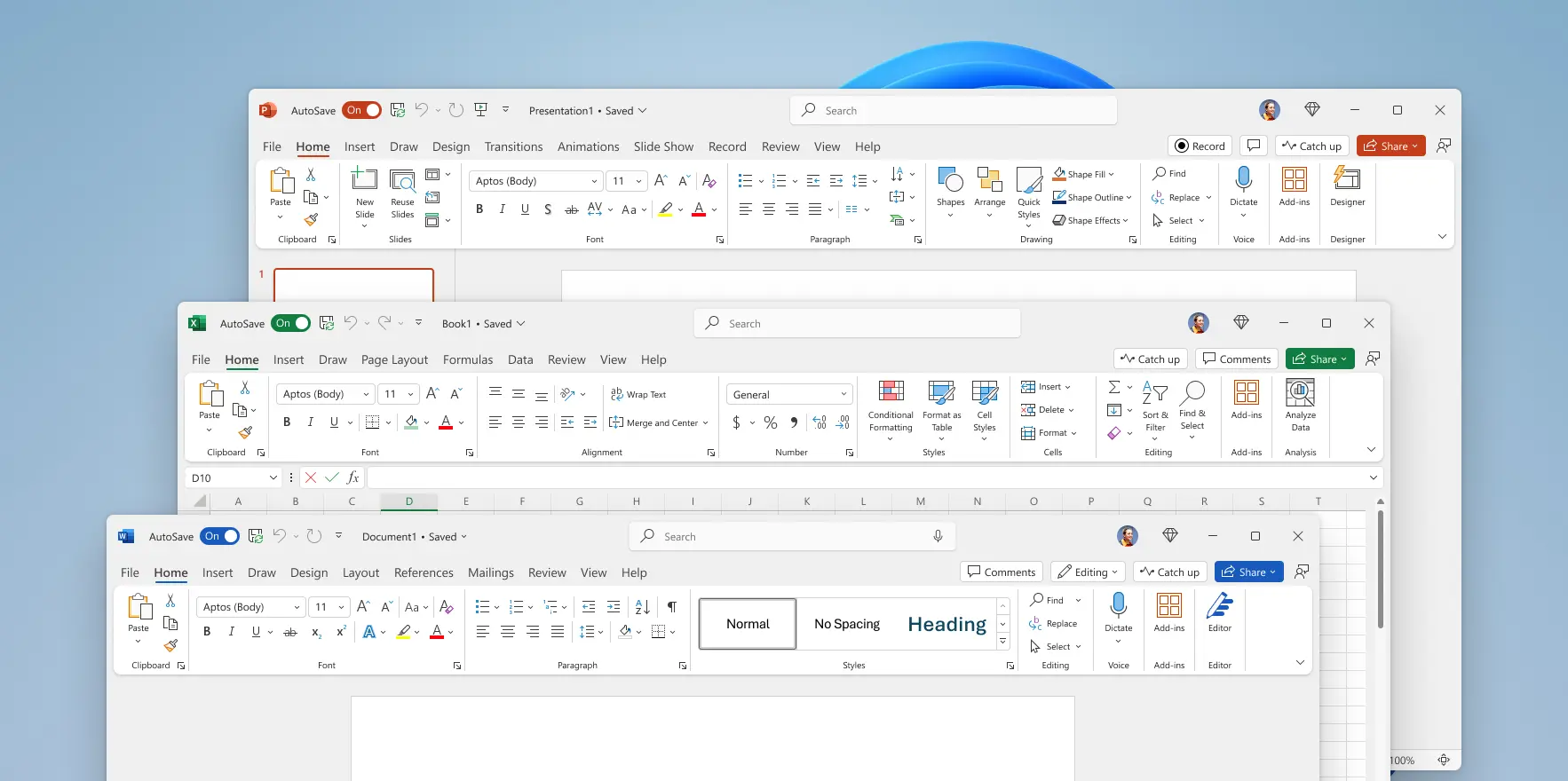Why did UI’s turn from practical to form over function?
E.g. Office 2003 vs Microsoft 365

It’s easy to remember where everything is with a toolbar and menu bar, which allows access to any option in one click and hold move.

Seriously? Big ribbon and massive padding wasting space, as well as the ribbon being clunky to use.
Why did this happen?
Eh, I don’t hate the ribbon UI. It certainly looks a lot nicer than the old ones.
I think the biggest crime is that we went towards widescreens and kept all the menus and toolbars along the top.
Another issue is complexity. In a rush to sell yearly updates, more and more features are crammed in. Most of us only use a tiny fraction of them, but there they are on the screen just in case. For everyone.
You’re never going to make one UI that makes everyone happy. Most people just learn where the 20 buttons or so that they use are, and blank the rest from their mind. That’s the real reason the ribbon UI got hate. Their buttons moved.
no, I’m willing to die on the hill that the ribbon UI is one of the greatest UIs period - especially how it was done in office 07 and 10. As a computer noob at the time, it was a huge improvement over the previous office 2003 UI.
The icons always gave you a good idea what something was doing, important functions were bigger and when you for example selected a table the table tab was visible and with a different color so you knew that you could do things with that table.
I think however many 3rd party programms did the ribbon UI poorly or had not enough features for it to make sense.
I’m so tired of neck beards assuming that any spacing in a design is a waste, as if a good design packs every milimeter with stuff. Proper application of negative space is common in art and throughout design.
Almost like Microsoft did a tremendous amount of user research aimed at improving the accessibility of the most commonly used features. I don’t use their products much, but the design has definitely improved over the years and extra padding is a big part of it.
Btw, just so you know, Libre Office has multiple UIs, incliuding a Ribbon-like variant. View > User Interface.
But they let you choose.
Exactly, this is the way. I use it w/o the ribbon, but I like that the ribbon is an option for those who like it.
Well a big problem is when a UI has a small learning curve that then gives a huge benefit in usability, letting the user decide based on their feelings might lead to them having a worse off experience in the end, is that something you’d be open to getting people complaining about not finding their options day and night while they stubbornly avoid the ribbon?
Sure. If they prefer to not use the ribbon, UX have two options:
- advertise the ribbon better
- improve the non-ribbon UX
Eliminating the non-ribbon UX is more likely to alienate those users than to actually improve anything.
But the ribbon is the improvement over the non-ribbon UX. There’s just no pleasing some people who don’t want anything to change, even if they’re currently struggling to use all the tools they have available and they’ve stockholmed themselves into learning workarounds. Someone else posted about how before the ribbon, when asked for features to add, people asked for features that they already had access to, but didn’t know about it
It’s really not though. The ribbon:
- takes up way more space
- essentially hides features I actually use
- can change depending on context, which is jarring for a new user
And that’s why there should be two options, just like LibreOffice has done. Have a simpler UX for new users, perhaps based on a ribbon UI, and leave the more compact UX for power users. The problem isn’t that the ribbon sucks innately, it’s just that it’s not ideal for power users.
- It’s about the same size as the before screenshot if you added one more toolbar, except you have better groupings
- you can customize it, if you find features you frequently use are in hard to reach spaces. I doubt it actually fully hides the thing, and they’ve also majorly improved the search at the same time as they deployed the ribbon so you can use that as backup. It’s not like features weren’t hidden before anyway, you just didn’t use them yourself at the time to notice.
- you mean the extra tabs it can get? It never fully changes everything afaik, just get a few more tabs that are otherwise not needed.
I simply dislike the connection that clean modern design is for noobs and power users just need a list and that’s it. It’s not like the design is made without consulting or taking in data from advanced users, and if you’re truly a power user you can customise it and make it your own. No, I believe that’s just stubbornness to trying something new, or lack of openness to do so when it’s not a priority to evolve your workflow, you simply want to get from A to B. Feel free to correct me, but tight compact layouts aren’t inherently power user friendly, just as padded grouped layouts aren’t inherently anti-power user
- right, and I hated the initial one, and I’d usually customize it to get rid of a row
- the problem is that everything is differently sized, so it’s hard to just drop part of it; e.g. I use shortcuts for bold, italic, and underline, but just getting rid of those doesn’t particularly help
- really? I could’ve sworn it changed based on what you were doing, like editing a table or cell or something. I honestly just use Google Drive (work) and LibreOffice (home) instead because Office annoys me
clean modern design is for noobs and power users just need a list and that’s it
Modern design has, by definition, a lot of negative space, which by definition means fewer functions can fit on the screen at the same time. I certainly appreciate clean design, but the tools I use the most as a power user are fairly obtuse to get into:
- vim - my editor, and the learning curve there is like a cliff
- CLI tools like ripgrep + regex - learning regex properly is something for later in a 4-year CS degree
- Rust programming language - learning curve is basically a meme (it’s not that bad though)
- favorite game is EU4 - complex strategy game with a ton of variables and numbers; second favorite: Dwarf Fortress
And other than vim and regex (learned in school), I learned all of those (and more!) after entering the workforce, some of those ~10 years after, and I’m constantly learning new tools (e.g. we use macOS at my current job, and this is my first time using macOS full-time in my career). So I don’t think it’s really about being stubborn, but frustration when the tools you’re familiar with change drastically. If it was an option, I might try it and swap between it sometimes, but if I’m forced to use the new UX, I’m going to be pissed.
I’m not saying “tight compact layouts are inherently power user friendly,” I’m saying power users are comfortable with a certain workflow and know where all their tools are, and then when everything gets jumbled, they have to go relearn everything. It’s like when my MIL comes and reorganizes our kitchen, my SO and I get pissed trying to find everything again. Once you learn a compact tool, it’s really easy to find what you want, whereas when a tool has a lot more negative space, less fits on the screen and you have to go find the stuff you want (i.e. click a different ribbon menu, then click the tool, instead of just clicking the tool).
That’s why I think both should be an option. If you decide your workflow only needs a handful of tools, you should be able to ditch the ribbon and make a toolbar with just those tools (which includes some in the menus).


